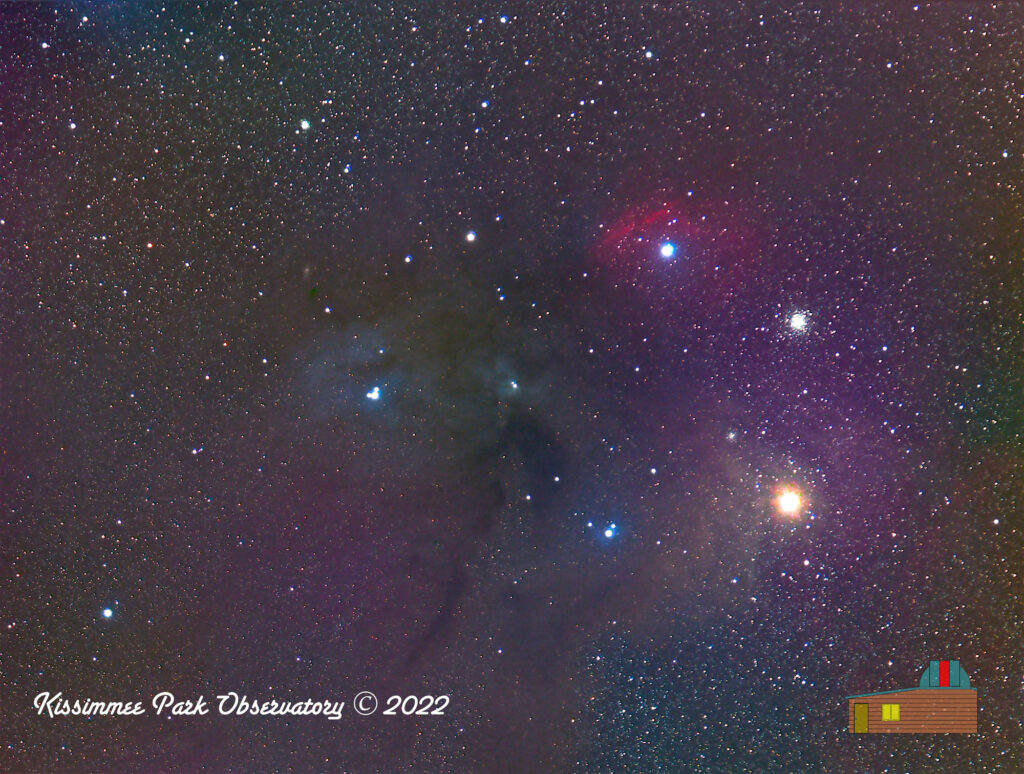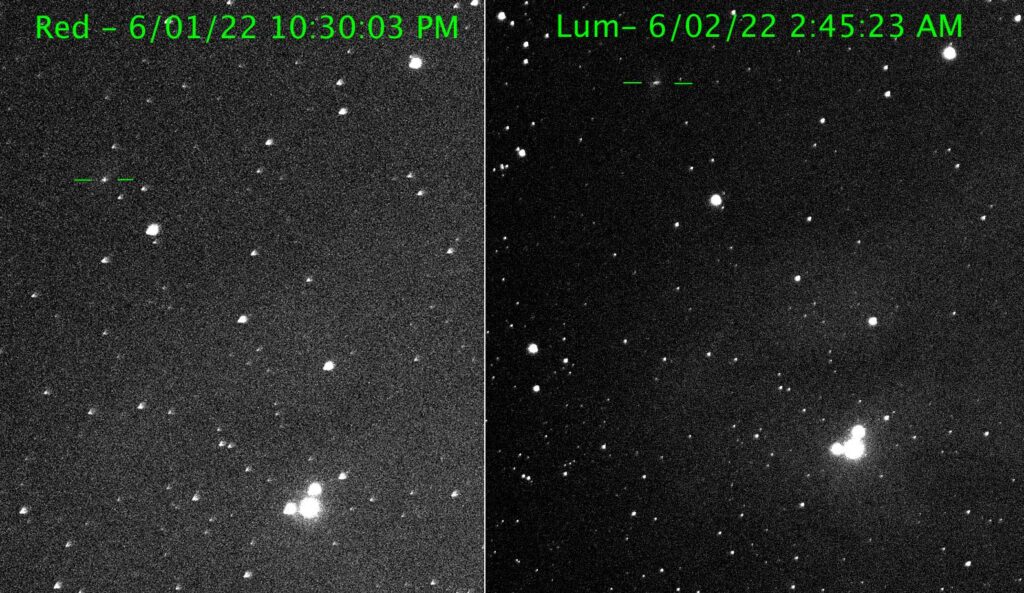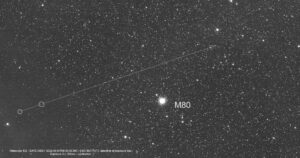This is the Rho Ophiuchi Cloud Complex, which lies near the summer Milky Way on the border between the constellations of Scorpius and Ophiuchus. This area is loaded with gas and dust, and is home to many deep sky objects. It is also one of the more colorful nebulae in the sky.
The bright star in the image is the red supergiant Antares, shining at magnitude 1.1. Just above Antares lies the sprawling globular cluster Messier 4 (M4). The red H2 region above M4 is Sharpless 9 (Sh 2-9). Just left of center is the Mickey Mouse shaped trinary star system Rho Ophiuchi. To the upper left is the compact globular cluster Messier 80 (M80).
All these objects appear on an annotated version of the main image above.
This is a true color image, in that multiple subframes of Red, Green, and Blue were shot and combined. There was an additional Hydrogen Alpha channel added to pick up the Sh 2-9 nebula area. This target could definitely use more data – perhaps I can add more later this summer.
Click on the image for a larger version you can explore.
Halfway between Rho Ophiuchi and M80 is an object that looks like a galaxy, but it does not appear on any star charts or sky surveys – this might be a faint comet but I do not find any references of a comet at this time. This object showed motion over the 5 hours while I was imaging (click for larger version). The object has been marked with a “??” on the annotated version above.
UPDATE: After being raised to the Comet Watch astronomical community it was generally agreed that this was some type of internal reflection from the bright star Antares in the frame, or some processing anomaly. Two comet heavyweights provided input to the analysis (Terry Lovejoy and Alan Hale). Terry Lovejoy actually used the T20 telescope in New Mexico to look for the potential comet but was unable to confirm.
Here is Terry Lovejoy’s negative finding image:
Image Info
- Imaged from the KPO field in Saint Cloud, Florida.
- Camera : ZWO ASI1600MM Pro, Gain set to 200
- Lens: Canon 100-400 f/5.6L lens, set to 135mm
- Mount: iOptron SmartEQ Pro
- Red: 12 subframes of 300s = 60 min integration
- Green: 8 subframes of 300s = 40 min integration
- Blue: 10 subframes of 300s = 50 min integration
- Luminance: 11 subframes of 300s = 55 min integration
- Hydrogen Alpha: 2 subframes of 300s = 10 min integration
- Total integration time: 215 min = 3.6 hours.
- Captured via ASIAir Pro automation
- Optical tracking via ASIAir automation, currently using ST4 mount control via the ASI120MM-S guide camera
- Separate channels stacked and HaLRGB integrated in Astro Pixel Processor, and processing for light pollution sky fog removal
- Image cropped, stretched, and noise processed in Nebulosity.
- Final processing in Aperture
- Annotations done in PhotoShop



